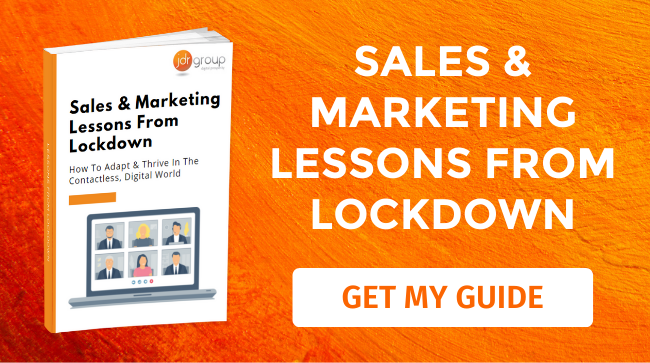Is Your Sales Process Holding Your B2B Business Back?

While most businesses plan their marketing strategy and their service delivery process with meticulous detail, the sales process is often left to look after itself. The way in which your team handles the sales cycle and the business of closing deals is important, and in some cases may be holding your business back.
In this article, we take a brief look at the most common inefficient sales processes that hinder businesses, and how you can move beyond them.
1) Price vs Value
The biggest perceived obstacle in making a sale is almost always price. The price is too high, it’s out of budget, or it just looks like a big number. Salespeople approach this problem in different ways, but it usually involves making on the spot discounts and reductions. At worst, this can severely damage your profit margins and even your ability to deliver quality services, and at best it makes it difficult to track your ROI and profitability accurately.
The solution is to move the sales conversation (and your supporting online marketing content) away from raw price and towards value, explaining the benefits to the customer and how much money they could make by investing in your products and services. There will still be people who can’t afford what you have to offer but focusing on value will let you avoid a race to the lowest prices that, ultimately, benefits neither your business nor your customers.
2) Cold calls
Cold calling – making unsolicited phone calls, emails, or visits to prospective customers, is nerve wracking, labour-intensive, and inefficient. You are as likely to deter a sale as you are to secure a new customer. Many businesses still make cold calls under the guise of ‘calls from the director’ or ‘outreach’ but it still adds up to the same inefficient practice. We recommend substituting cold calling for warm approaches following an inbound online enquiry. Once inbound leads have been nurtured by email to the point that there is a compelling reason to speak to you, they will welcome your call, and you’ll be more likely to close the deal.
3) Talking too much, not listening enough
Talking too much is an easy trap to fall into for salespeople because the onus is on you to actively sell the product to a prospect who is passively listening. In face-to-face and telephone conversations, this can come across as pushy and, even worse, often comes at the expense of listening to what the prospect wants. The way around this is to consciously adopt a listening to talking ratio of around 2 to 1, with open-ended questions that encourage the prospect to lead the conversation and provide information about the type of solutions they require.
Unfortunately, many of these inefficient sales practices then get transferred to online content and marketing materials, which become all about the business and not enough about the customer. By applying the same process of engagement and two-way dialogue to their online content strategy, a business can provide more value-driven content to the prospect that encourages engagement, conversions, and sales.
4) Features vs solutions
Each feature of your product or service will have been designed to provide a solution to a perceived market need, so it makes sense to promote these features during your sales process. However, the features themselves are not solutions, and so focusing too much on the details and fine points of what you do in your sales pitches and content risks distracting from the value that you provide. You can readjust this balance by refocusing your sales process on the problems and challenges your target buyers face in their roles, and how your business can help them overcome this in a cost-effective way. The result is that instead of a sales monologue of ‘we do XYZ’, you make your value proposition more relevant and meaningful to your target market, so they can visualise the benefits of investing in your products and services.
5) Not learning from experience
Some approaches work better than others in sales, and the way to develop and improve your sales strategy is, ultimately, to keep meticulous records, monitor your data, and evaluate your successes and failures. Not recording sales communications is a classic sales mistake and results in inefficient and inconsistent engagements with prospects. Ideally, every business should use a sales CRM that centralises all sales and marketing communications and provides all round visibility for everyone involved in the sales process. This prevents you missing opportunities and ensures that all valuable conversations are recorded and capitalised upon for best chance of a conversion.
Personalised sales support from JDR
Speak to one of our business coaches today to find out more about sales process optimisation, and how you can improve the value of your sales and the number of closed deals.
Image Source: Unsplash



